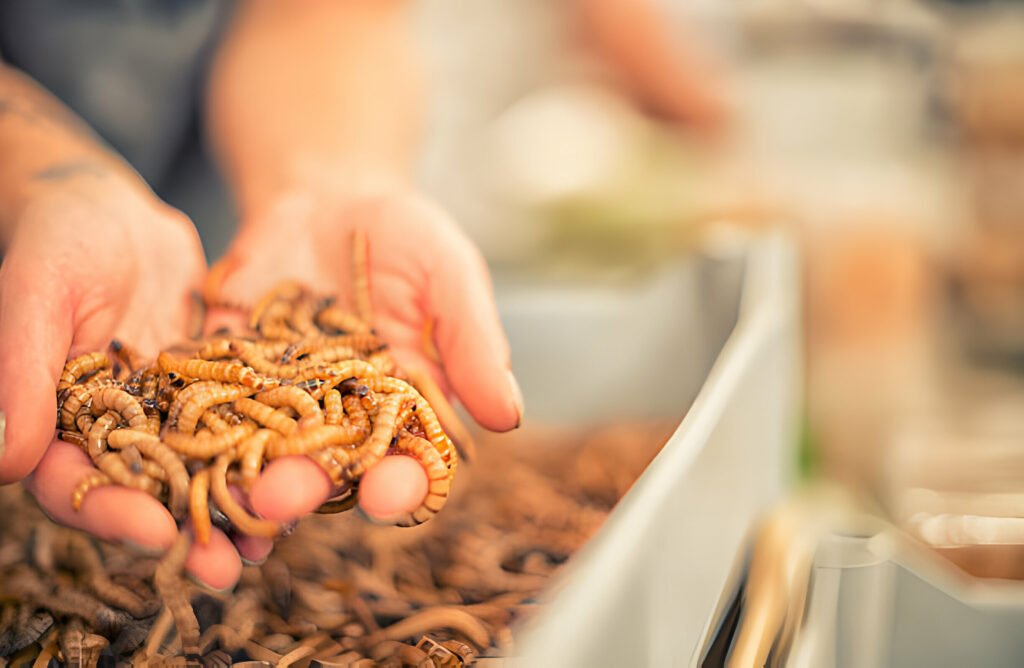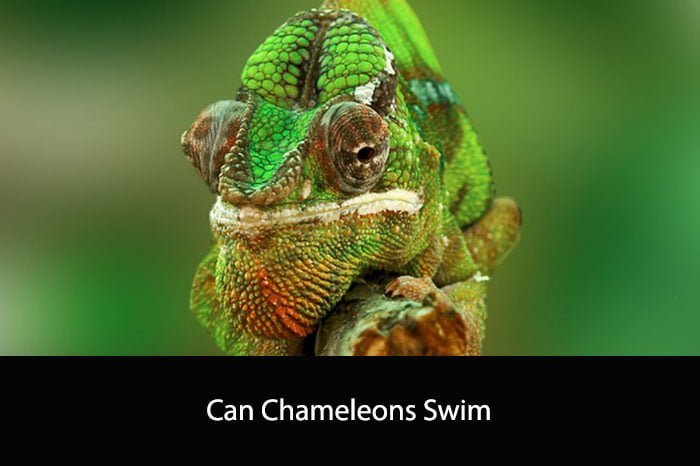Leopard geckos are one of the most popular pet reptiles due to their docile nature, ease of care, and unique appearance. As with any pet, it’s important to provide them with a balanced and nutritious diet. One of the questions that often arises among leopard gecko owners is whether or not they can eat super worms.

Super worms are a common feeder insect for reptiles and are often used as a staple food for larger species. However, leopard geckos have different dietary requirements than other reptiles and may not be able to digest super worms properly. In this article, we will explore whether or not leopard geckos can eat super worms and what you should consider before adding them to your pet’s diet.
Nutritional Benefits of Superworms for Leopard Geckos
Superworms are a popular food choice for leopard geckos due to their high nutritional value. These worms are rich in protein, fat, and other essential nutrients that are important for the health and well-being of your pet.
One of the main benefits of feeding superworms to leopard geckos is their high protein content. Protein is essential for growth and development, as well as for maintaining muscle mass and overall health. Superworms are also a good source of fat, which provides energy and helps to maintain healthy skin and coat.
In addition to protein and fat, superworms also contain other important nutrients such as calcium, phosphorus, and vitamin B12. These nutrients are essential for strong bones and teeth, as well as for proper nerve and muscle function.
When feeding superworms to your leopard gecko, it is important to ensure that they are properly gut-loaded and dusted with a calcium supplement. Gut-loading involves feeding the worms a nutritious diet before feeding them to your pet, which helps to ensure that they are providing optimal nutrition. Dusting the worms with a calcium supplement helps to ensure that your pet is getting enough of this important mineral.
Overall, superworms are a nutritious and beneficial food choice for leopard geckos. By incorporating them into your pet’s diet, you can help to ensure that they are getting the essential nutrients they need to thrive.
Risks and Considerations When Feeding Superworms

When considering feeding leopard geckos superworms, there are several risks and considerations that should be taken into account. While superworms can be a nutritious addition to a leopard gecko’s diet, they can also pose some potential health risks if not fed properly.
One of the main concerns with feeding superworms is their hard exoskeleton. If a leopard gecko eats too many superworms, or if the worms are too large, they may have difficulty digesting them. This can lead to impaction, which is a blockage in the digestive tract that can be fatal if left untreated. To avoid this, it is important to feed superworms in moderation and to choose worms that are an appropriate size for your gecko.
Another consideration when feeding superworms is their high fat content. While leopard geckos require some fat in their diet, too much can lead to obesity and other health problems. It is important to balance the amount of superworms with other nutritious foods, such as crickets and mealworms, to ensure a well-rounded diet.
In addition, it is important to consider the source of the superworms. Superworms that are raised on a poor diet or in unsanitary conditions can carry parasites or harmful bacteria that can make your leopard gecko sick. It is important to purchase superworms from a reputable supplier and to inspect them carefully before feeding them to your gecko.
Overall, feeding superworms to leopard geckos can be a nutritious and enjoyable addition to their diet when done properly. By taking the necessary precautions and feeding them in moderation, you can help ensure your gecko stays healthy and happy.
Proper Feeding Techniques for Superworms
When feeding our leopard geckos superworms, it is important to follow proper feeding techniques to ensure their health and well-being. Here are some tips to keep in mind:
1. Size Matters
Superworms come in different sizes, so it is important to choose the right size for your leopard gecko. We recommend feeding them worms that are no longer than the width of your gecko’s head. Feeding them worms that are too big can cause impaction, which can be fatal.
2. Gut-Loading
Before feeding your leopard gecko superworms, it is important to gut-load the worms. This means feeding them nutritious food, such as vegetables and fruits, to ensure that they are providing optimal nutrition to your gecko. We recommend feeding them for at least 24 hours before feeding them to your gecko.
3. Dusting
To ensure that your leopard gecko is getting all the necessary vitamins and minerals, it is important to dust the superworms with a calcium and vitamin D3 supplement. We recommend dusting the worms once a week.
4. Feeding Frequency
Leopard geckos should be fed superworms no more than once a day. Overfeeding can lead to obesity and other health problems. We recommend feeding them 3-4 worms per feeding.
By following these proper feeding techniques, you can ensure that your leopard gecko is getting the nutrition they need from superworms without any negative health consequences.
Frequency and Quantity of Superworms to Feed
When it comes to feeding leopard geckos, it is important to provide them with a balanced diet that includes a variety of insects. Superworms can be a nutritious addition to a leopard gecko’s diet, but it is crucial to feed them in moderation.
We recommend feeding adult leopard geckos 2-3 superworms, 2-3 times a week. Juvenile leopard geckos can be fed slightly more frequently, with 2-3 superworms offered 3-4 times a week.
It is important to note that superworms should not be the only food item offered to leopard geckos. A varied diet that includes crickets, mealworms, and other insects is necessary to provide the necessary nutrients and prevent nutritional deficiencies.
Additionally, it is important to ensure that the superworms are appropriately sized for the leopard gecko. Superworms that are too large can pose a choking hazard, while those that are too small may not provide adequate nutrition.
In summary, superworms can be a healthy addition to a leopard gecko’s diet when fed in moderation and as part of a varied diet. Ensure that the quantity and size of the superworms are appropriate for the leopard gecko’s age and size.
Preparing Superworms for Feeding
When feeding leopard geckos, it’s important to ensure that the superworms are properly prepared. Here are some tips on how to prepare superworms for feeding:
- Gut-load the superworms: Before feeding the superworms to your leopard gecko, it’s important to gut-load them. This means feeding the superworms a nutritious diet so that they, in turn, will provide your leopard gecko with the necessary nutrients. We recommend feeding the superworms a diet of fresh fruits and vegetables, such as carrots, apples, and leafy greens.
- Dust the superworms with calcium powder: Leopard geckos require calcium for healthy bone growth, and superworms can be a good source of calcium. To ensure that your leopard gecko is getting enough calcium, dust the superworms with calcium powder before feeding them to your leopard gecko. We recommend using a calcium powder specifically formulated for reptiles.
- Offer the superworms in a shallow dish: When feeding superworms to your leopard gecko, it’s important to offer them in a shallow dish. This will prevent the superworms from burrowing into the substrate and potentially causing impaction. We recommend using a dish that is easy to clean, such as a small plastic container.
By following these tips, you can ensure that your leopard gecko is getting the necessary nutrients from the superworms and that they are being offered in a safe and appropriate manner.
Alternatives to Superworms for Leopard Geckos
While superworms are a popular food choice for leopard geckos, there are several alternatives that can provide a balanced and varied diet for your pet. Here are some options to consider:
Mealworms
Mealworms are a common feeder insect for leopard geckos. They are easy to find and can be purchased in bulk. They are also a good source of protein, but they are not as nutritious as superworms. It is important to gut-load mealworms before feeding them to your gecko to ensure they are getting the necessary nutrients.
Crickets
Crickets are another popular feeder insect for leopard geckos. They are high in protein and can be purchased in different sizes to accommodate your gecko’s needs. However, crickets can be noisy and smelly, and they can escape from their enclosure. It is important to dust crickets with calcium and vitamin supplements before feeding them to your gecko.
Dubia Roaches
Dubia roaches are a nutritious feeder insect that are becoming more popular among leopard gecko owners. They are high in protein and low in fat, making them a healthy choice. They are also easy to digest and do not have a hard exoskeleton, making them a good option for geckos of all ages.
Silkworms
Silkworms are a soft-bodied feeder insect that are high in protein and calcium. They are a good option for geckos that have trouble digesting harder insects. However, they can be more difficult to find and are typically more expensive than other feeder insects.
Overall, there are several alternatives to superworms that can provide a balanced and varied diet for your leopard gecko. It is important to offer a variety of feeder insects to ensure your gecko is getting all the necessary nutrients.
Frequently Asked Questions
What are the dietary risks of feeding superworms to leopard geckos?
While superworms can be a great addition to a leopard gecko’s diet, there are some potential risks to be aware of. One risk is that superworms are high in fat, which can lead to obesity if they are overfed. Additionally, if the superworms are too big or not properly gut-loaded, they can cause impaction in the leopard gecko’s digestive tract.
How should superworms be introduced into a leopard gecko’s diet?
When introducing superworms into a leopard gecko’s diet, it’s important to start slowly. Begin by offering one or two superworms per meal, and gradually increase the number over time. It’s also important to ensure that the superworms are properly gut-loaded and the appropriate size for the leopard gecko.
What is the appropriate number of superworms to feed a leopard gecko per meal?
The appropriate number of superworms to feed a leopard gecko per meal will depend on the age and size of the gecko. As a general rule, adult leopard geckos can be fed 3-5 superworms per meal, while younger geckos should be fed fewer.
Why might a leopard gecko refuse to eat superworms?
There are a few reasons why a leopard gecko might refuse to eat superworms. One possibility is that the superworms are too big or not properly gut-loaded. Another possibility is that the gecko simply doesn’t like the taste or texture of the superworms. If your leopard gecko refuses to eat superworms, try offering a different type of feeder insect.
Can feeding my leopard gecko superworms cause any health issues?
While superworms can be a healthy addition to a leopard gecko’s diet when fed in moderation and properly gut-loaded, there are some potential health issues to be aware of. As mentioned earlier, overfeeding superworms can lead to obesity, and improperly gut-loaded superworms can cause impaction. Additionally, if the superworms are not properly stored, they can become contaminated with bacteria or parasites.
Are there any nutritional differences between superworms and other worms commonly fed to leopard geckos?
Yes, there are some nutritional differences between superworms and other worms commonly fed to leopard geckos. Superworms are higher in fat and lower in calcium than some other feeder insects, such as crickets. However, they are still a good source of protein and can be a healthy addition to a leopard gecko’s diet when fed in moderation and properly gut-loaded.





